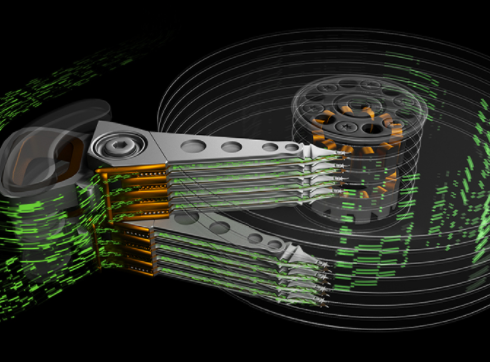
Seagate Mach.2 specs have finally been revealed! The Mach.2 family will be introducing the Mach.2 Exos 2X14, which will reportedly be offering a massive 14TB capacity with two independently addressable 7TB logical units.
Seagate Mach.2 Specs
3.5-inch
12GB/s SAS drive
524MB/s maximum sequential transfer rate
7200 RPM spindle speed (not as fast compared to 10K and 15K drives)
Dual actuator technology
Seagate Exos 15E900 Specs
2.5-inch
900GB HDD
2ms lower latency
210-300MB/s transfer rate
524MB/s for Exos 2x14 can outperform earlier SATA SSD models.
Seagate HDD: Mach.2 Specs Revealed
Seagate reportedly reveals more about why they used dual actuator drives. It was noted that hard drives became faster for three reasons, command queuing, increased spindle speeds, and integration of drive cache. Short stroking the drive can also increase the speed since it only stores data on the outer edges of the platter, improving transfer rates and reducing time.
Seagate is reportedly marketing the drive as a solution to short stroking. The spindle reportedly speeds up at an excess of 15,000 RPM might not be practical since vibrations created by multiple drives all running at that speed could cause potential harm when enclosed.
Seagate Mach.2 Capabilities Compared to SATA
According to ExtremeTech, Seagate notes that the number of IOPS/TB offered by general hard drives has decreased over time. If an application would require a 7.0 minimum IOPS/TB ratio, the HDD can't use over 12TB while still retaining its performance metric. If this happens with a 20TB drive, the extra won't be usable.
Boosted performance allows 24TB HDD to offer an identical 12TB drive with an IOPS/TB ratio. SAS 12GB/s was reportedly used for SATA for several reasons. The 1st gen Mach.2 saturates that SATA bus, which makes SAS 12GB/s a better long-term option. The two actuators are also fully independent. Seagate notes that the measured, real-world performance improvement is consistent with the 1.85x to 2x range.
Read Also: Samsung 870 Evo SSD Vs 860 SSD: Price and Speed Comparison
Can an SSD Beat an HDD?
The Mach.2 drives can also be RAIDed internationally. Seagate, however, cautions against relying on just a single drive for redundancy. This is given that the dual actuators don't really mean the whole physical drive is then duplicated/protected.
Dual actuators technically do not give the HDDs the responsiveness or performance of SSDs. This is due to no magnetic spinning discs matching the performance of the SSD. HDDs remain important to the whole data center market.
Both Microsoft and Seagate had partnered for the drives to boost performance in just a single drive bay. HDDs are increasingly rare when it comes to consumer products. The enterprise and business shipments, however, have been less affected. Enterprise drive sales reportedly rose by 1.9% in 2020 compared to the previous 18.2% decline for the whole HDD market.
Related Article: Sabrent SSD 64TB: Largest Capacity Solid State Drive, Only as Big as a Graphics Card-Available Soon
This article is owned by Tech Times
Written by Urian B.
ⓒ 2025 TECHTIMES.com All rights reserved. Do not reproduce without permission.




